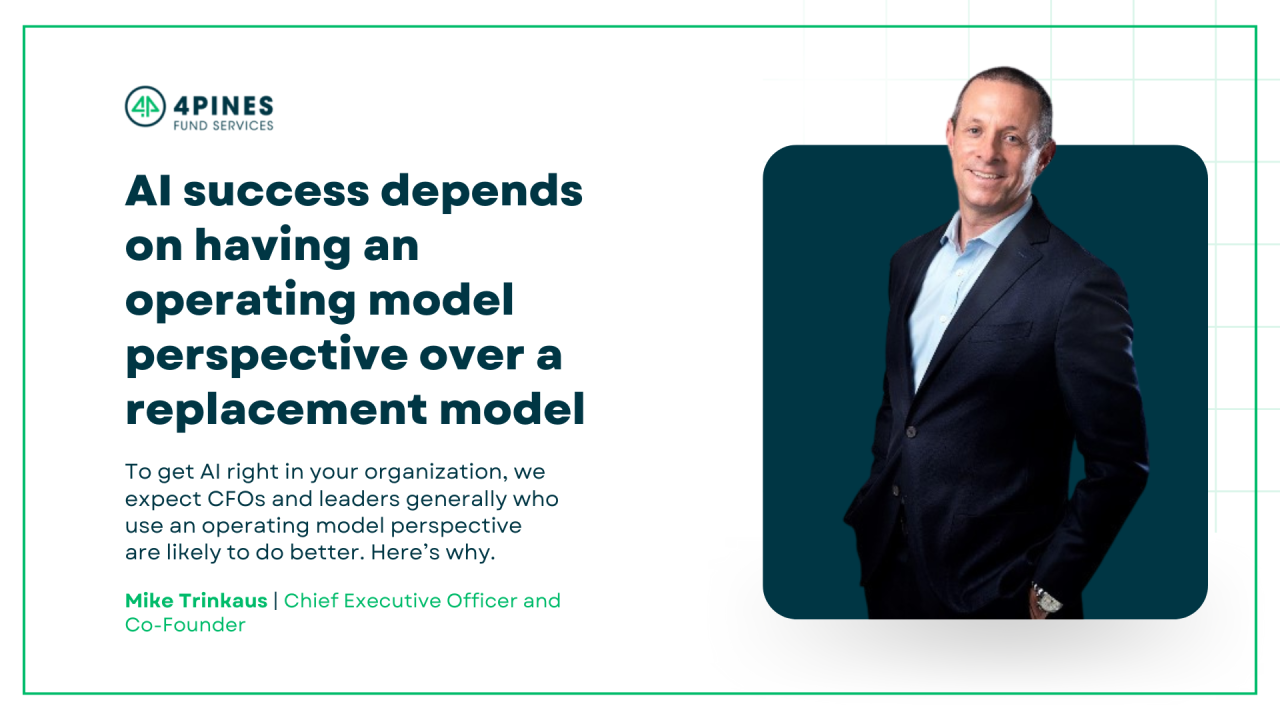To get AI right in your organization, we expect CFOs and leaders generally who use an operating model perspective are likely to do better. Here’s why.
An operating model perspective focuses on how an organization delivers value through its structure, processes, and resources, while a replacement model focuses on the optimal timing for replacing assets like equipment or personnel due to deterioration or failure. The operating model is about optimizing ongoing operations, while replacement models are about addressing specific instances of asset renewal.
Operating Model Perspective
- Definition: An operating model describes how an organization functions to achieve its strategic goals. It defines the key processes, capabilities, structure, and technology needed to deliver value to customers and stakeholders.
- Focus: Optimizing the overall way an organization operates, including how it delivers products or services, manages resources, and makes decisions.
- Examples: A modern operating model might include elements like agile teams, cloud-based infrastructure, and data-driven decision making.
- Key Questions: What are the core capabilities needed? How do we structure ourselves to deliver value? What processes are critical?
- Goals:Improve efficiency, effectiveness, and adaptability, while also enabling strategy execution and growth.
Replacement Model Perspective
- Definition:A replacement model focuses on the optimal timing for replacing resources, including personnel.
- Focus: Analyzing how to deliver the same value or better by replacing resources with automated substitutes that minimize overall costs or maximize efficiency.
- Examples: Deciding when and how to replace employees with automation or agents as retirement or performance issues occur, or slow hiring.
- Key Questions: When and how should a resource be replaced to minimize costs and minimize disruptions? What are the risks of keeping a resource versus replacing it?
- Goals:Minimize costs, improve reliability, and ensure the continued operation and delivery of essential services.
Key Differences
- Scope:Operating models address the entire organization and its operations, while replacement models focus on individual assets or personnel.
- Time Horizon:Operating models are concerned with ongoing operations, while replacement models focus on specific points in time when assets are replaced.
- Decision Type: Operating model decisions are strategic and structural, while replacement decisions are often tactical and operational.
- Objectives: Operating model decisions aim to optimize overall performance, while replacement decisions aim to optimize the cost and performance of individual assets.
A key reason the operating model becomes more powerful with AI is that it allows teams to do significantly more, and do it better, with the resources you have and those you add. AI can assist with specific tasks, streamline workflows, and handle much of the manual coordination that slows down delivery. Even more powerfully, it can generate new tools and systems to automate these processes end-to-end. When you understand how your organization fits together—across systems, roles, and processes—you’re in a better position to unlock new levels of scale and quality.
